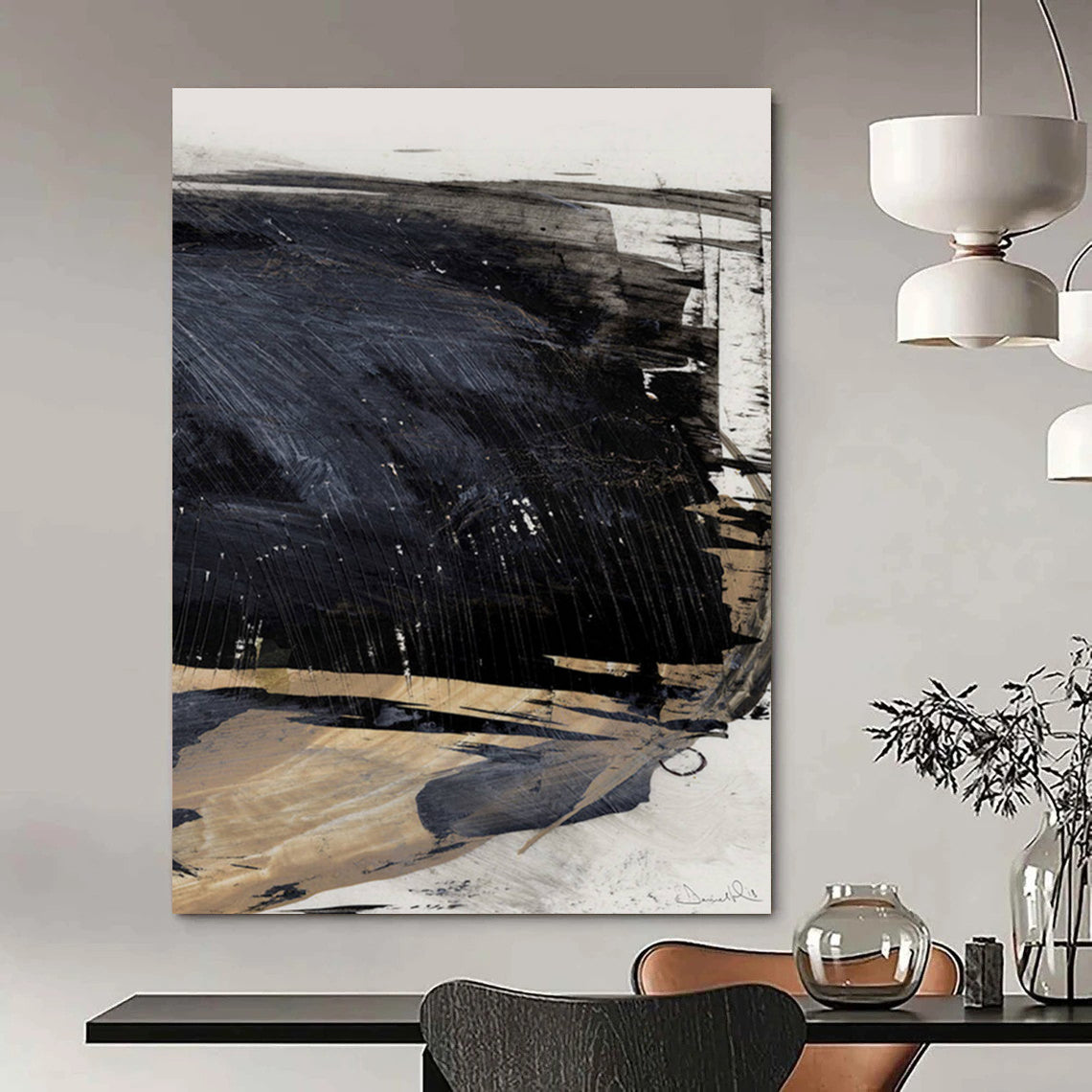Gray Abstract Art represents a sophisticated and subtle corner of contemporary visual art. This genre, exploring the nuanced spectrum of gray tones, emphasizes texture, form, and tonal variations to create evocative, introspective compositions. It stands out for its ability to convey mood and complexity with minimal color, making it a favorite in modern art collections and interior decor. Discover a refined collection of this understated art at Gray Abstract Art.
The appeal of gray in abstract painting lies in its neutrality and versatility. While gray is often perceived as a background or secondary hue, in abstract art it becomes the primary vehicle for exploring contrasts and subtle shifts in light and form. Artists like Piet Mondrian, famous for works such as Gray Tree, seamlessly integrated gray to bridge vibrant colors with geometric abstraction. His innovative use of gray added dimension and balance to the art movement known as De Stijl.
Prominent abstract expressionists like Mark Rothko and Cy Twombly also employed gray palettes to evoke depth and emotion. Rothko’s muted gray and black blocks create contemplative atmospheres, inviting inward reflection without the distraction of vivid color. Twombly’s layered scribbles and gestural marks rendered in gray shades reveal the spontaneity and complexity that define abstract expressionism. This tableau of gray tones communicates emotions subtly yet powerfully.

Contemporary gray abstract painters continue this legacy, experimenting with texture and layering techniques. Artists such as Tom McGlynn and Marcy Rosenblat use grays to create ethereal landscapes of depth and ambiguity, often blending soft washes with precise geometric forms. Their work illustrates how gray abstract art remains both timeless and innovative. For curated inspiration and purchase options, visit collections like Ideelart’s soothing gray abstract art and Artexplore’s Grey Abstract Canvas Art.
Gray abstract art also resonates in interior design, where neutral tones enhance calmness and sophistication. Whether employed in minimalist spaces or layered into eclectic décors, gray’s flexibility supports and complements other design elements effortlessly. The balance and depth offered by gray abstract paintings make them ideal focal points in living spaces, studios, or corporate environments seeking understated elegance.
Understanding the historical and contemporary relevance of gray in art is enriched by scholarly resources. For example, the Art in Context analysis of Piet Mondrian’s Gray Tree provides valuable insight into one of the earliest abstract uses of gray. Articles tracing the challenging and fascinating history of gray elucidate how this color evolved from obscurity to prominence in various art movements.
Frequently Asked Questions (FAQ)
What is gray abstract art?
Gray abstract art is a genre focused on abstract compositions primarily using shades of gray to explore form, texture, and light.
Which artists are best known for gray abstractions?
Key figures include Piet Mondrian, Mark Rothko, Cy Twombly, along with contemporary painters such as Tom McGlynn.
Why is gray important in abstract painting?
Gray balances vibrancy with neutrality, creating depth and emotional subtlety while highlighting structure and contrast.
Where can I view or buy gray abstract paintings?
Curated collections like Gray Abstract Art, Ideelart, and Artexplore offer diverse selections.
How does gray abstract art impact interior décor?
Its neutral, calming tones harmonize with a range of styles, providing sophisticated focal points without overwhelming spaces.
Gray Abstract Art remains a vital and evolving realm that invites viewers to contemplate the nuanced beauty of neutrality. Its ability to convey depth, balance, and emotion through the subtle interplay of gray hues embodies a quiet yet profound artistic expression that enhances any collection or environment.

